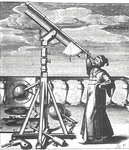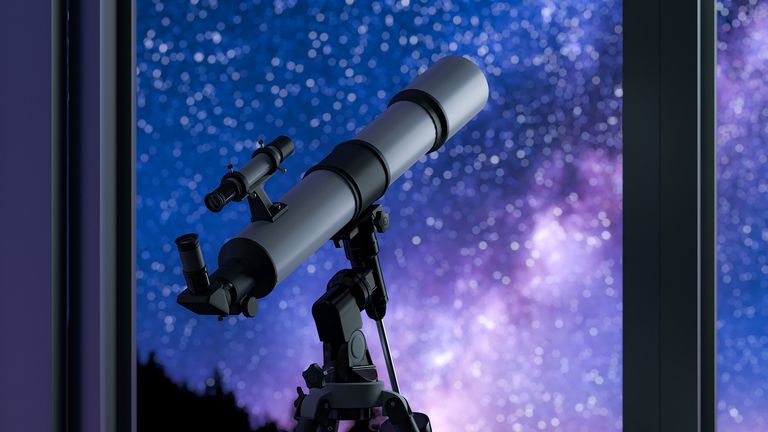Telescopes
Information about Telescope
Telescope, device used to form magnified images of distant objects. The telescope is undoubtedly the most important investigative tool in astronomy. It provides a means of collecting and analyzing radiation from celestial objects, even those in the far reaches of the universe.

Invention
The first person to patent a telescope was Hans Lippershey, a Dutch eyeglass maker, in 1608. He called his invention the ‘looker’ and was able to magnify things to three times their normal size. His ‘looker’ was made by fitting one concave piece of glass to a convex piece of glass.
In 1609, Galileo heard about Lippershey’s invention and began building his own design making many improvements so that the magnification of his telescope reached 20 times.
Interesting Facts About telescope
1.Galileo is often created as the inventor of the telescope when in fact he was simply the first to use it to study the night sky. The first telescopes were all refracting telescopes.
2.The first telescopes were used by merchants to see upcoming trade ships in order to beat out the competition.
3.Hans Lippershey invented the telescope in 1608.
4.Galileo's blindness is believed to have been the result of him looking directly at the Sun with his telescope.
5.Today, there are some online telescopes that allow you to view the night sky in various places from the comfort of your own home.
6.The Hubble Space Telescope is a telescope that was launched into space over two decades ago and provides us with a lot of data about our galaxy.

8.The James Webb Space Telescope will replace the Hubble Space Telescope when it ends it orbit.
9.The first telescopes were made using glass lenses.
10.Modern telescopes can detect infrared and radio waves.
11.An observatory is a remote location that houses at least one telescope.
12.The word telescope is derived from Greek words meaning "far" and "to look and see".
13.Most all telescopes have the ability to detect some type of electromagnetic waves.
14.The reflecting telescope was invented by Isaac Newton.

Hubble Telescope
Hubble Space Telescope (HST), the first sophisticated optical observatory placed into orbit around Earth. Earth’s atmosphere obscures ground-based astronomers’ view of celestial objects by absorbing or distorting light rays from them. A telescope stationed in outer space is entirely above the atmosphere, however, and receives images of much greater brightness, clarity, and detail than do ground-based telescopes with comparable optics.

The HST is a large reflecting telescope whose mirror optics gather light from celestial objects and direct it into two cameras and two spectrographs (which separate radiation into a spectrum and record the spectrum). The HST has a 2.4-metre (94-inch) primary mirror, a smaller secondary mirror, and various recording instruments that can detect visible, ultraviolet, and infrared light. The most important of these instruments, the wide-field planetary camera, can take either wide-field or high-resolution images of the planets and of galactic and extragalactic objects.
Some Picture Captured by hubble telescope:






Astroids <------------> Black hole